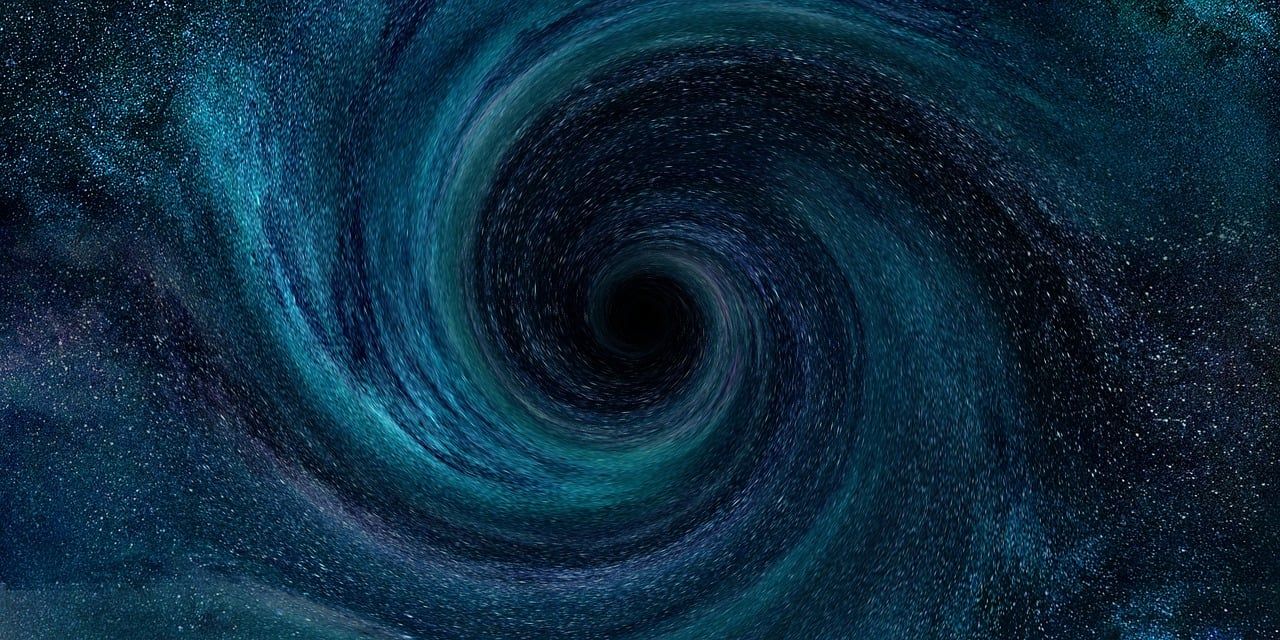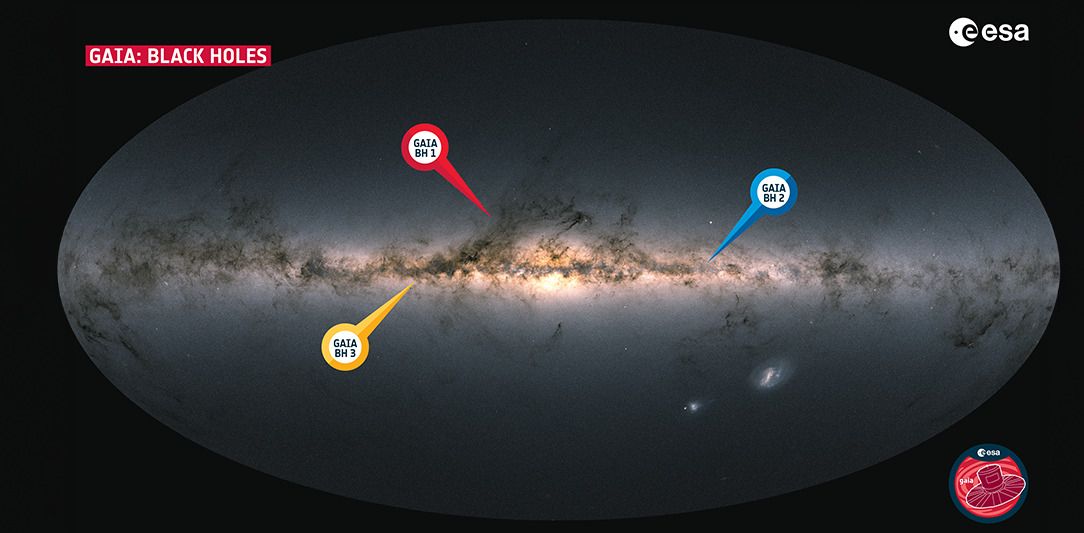Follow us on Google News (click on ☆)
With a mass about 33 times that of the Sun, this "monster" was hiding less than 2,000 light-years away from Earth, in the constellation Aquila. This is the first black hole of stellar origin of this size to be detected so close to Earth. This discovery, published in the journal Astronomy and Astrophysics, challenges our understanding of the evolution of massive stars.

Illustrative image by Pixabay
The matter within a black hole is so dense that nothing can escape its immense gravitational pull, not even light. Most of the known stellar-mass black holes consume matter from a nearby stellar companion. The captured matter falls into the black hole at high speeds, becomes extremely hot, and releases X-rays. These systems belong to a family of celestial objects called "X-ray binaries."
When a black hole's companion is not close enough to shed matter onto the compact object, no light or energy is emitted, making the black hole extremely difficult to detect. Such a black hole, referred to as "dormant," can still reveal its presence by inducing motion in its orbital companion detectable by highly sensitive astrometric instruments, like the Gaia space probe.
A breakthrough thanks to Gaia's incredible precision
Gaia's mission aims to measure the distance of over two billion stars by observing their movement across the sky with high precision. To set up for the upcoming Gaia data release, Gaia Data Release 4 (DR4), scientists involved in the Gaia collaboration undertake extensive calculations and tests to check if anything unusual stands out. Specialist teams are set up to examine unique cases and create derived data products.

The black hole Gaia BH3 (in yellow) adds to the two black holes (Gaia BH1 and Gaia BH2) already detected through the Gaia mission.
© ESA/Gaia/DPAC - CC BY-SA 3.0 IGO
One of these teams was established in 2020 by Laurent Eyer, a lecturer and researcher at the Department of Astronomy at the Faculty of Sciences, UNIGE, and Tsevi Mazeh, a researcher at Tel Aviv University, both co-authors of the study. Led by Berry Holl, a scientific assistant at the Department of Astronomy at UNIGE and also a co-author, their mission is to meticulously validate the results for stars with extreme movements, verify the integrity of potential black holes and avoid publishing obvious "false detections."
The team focused on an old giant star located about 1,926 light-years away in the constellation Aquila. By analyzing the star's wobbly trajectory in detail, the team was in for a huge surprise: the star was experiencing orbital motion induced by a dormant black hole with an exceptional mass of about 33 times that of the Sun. This is the third dormant black hole discovered with Gaia, aptly named Gaia BH3. "The quality of the latest data produced by the consortium has improved so significantly that we expect to publish a large number of authentic black holes in the DR4 catalog," enthuses Berry Holl.
A record for our Galaxy
The discovery of Gaia BH3 is exceedingly interesting because of its mass. Until now, black holes of this mass had only been detected in distant galaxies, thanks to observations of gravitational waves by the LIGO/Virgo consortium. The typical mass of known stellar-origin black holes in our galaxy is about 10 times that of our Sun. The previous record was held by a black hole in an X-ray binary in the constellation Cygnus (Cyg X-1), with a mass estimated at about 20 times that of the Sun.
Astronomers now face the challenge of explaining the origin of black holes the size of Gaia BH3. Current knowledge about the evolution of massive stars does not account for how these types of black holes could have formed. Most theories predict that as massive stars age, they shed a significant part of their mass through powerful winds; they eventually explode as a supernova, leaving behind either a neutron star or a black hole if the core was massive enough at the time of the explosion.
"However, the formation of black holes with a mass equal to or greater than 30 times that of the Sun presents a real challenge to current evolutionary models. The discovery of Gaia BH3 in our galaxy therefore offers a unique first opportunity to study the environment in which these surprisingly massive stellar black holes reside and to understand their origin," explains Nami Mowlavi, a researcher at the Department of Astronomy at the Faculty of Sciences, UNIGE, a team member and co-author of the paper.
An intriguing companion
With an orbit about 16 times the distance between the Sun and the Earth, Gaia BH3's companion star is rather unusual: an old giant star from the galactic halo, moving in the opposite direction to the stars of the galactic disk. Its path indicates that this star was likely part of a small galaxy that was absorbed by the Milky Way over 8 billion years ago. It could even have originated from a now-dispersed ancient globular cluster. The star contains very few elements heavier than hydrogen and helium, suggesting that the progenitor of Gaia BH3 might have been a similarly metal-poor massive star.
This finding is groundbreaking. It supports, for the first time, the idea that the large mass black holes observed by gravitational wave detections were produced by the collapse of primitive, metal-poor massive stars. These stars could evolve differently from those observed in the galactic disk and near the Sun. They might retain a major part of their mass until the end of their evolution and, once the nuclear fuel in their cores is exhausted, collapse to leave large mass black holes in the cosmos.
A tantalizing appetizer
The discovery of Gaia BH3 is just the beginning, and there is still much to learn about its perplexing nature. The Gaia collaboration found this treasure by validating preliminary Gaia data. The discovery is so exceptional that the team decided to announce it without waiting for the next official publication of data, scheduled no earlier than the end of 2025. "I am extremely pleased that we can share this astonishing discovery with the whole world," says Laurent Eyer. Now that scientists' curiosity has been piqued, this black hole and its companion are likely to be the subject of many detailed studies to come.